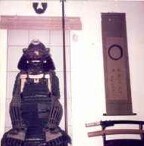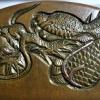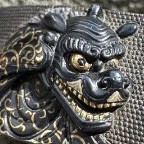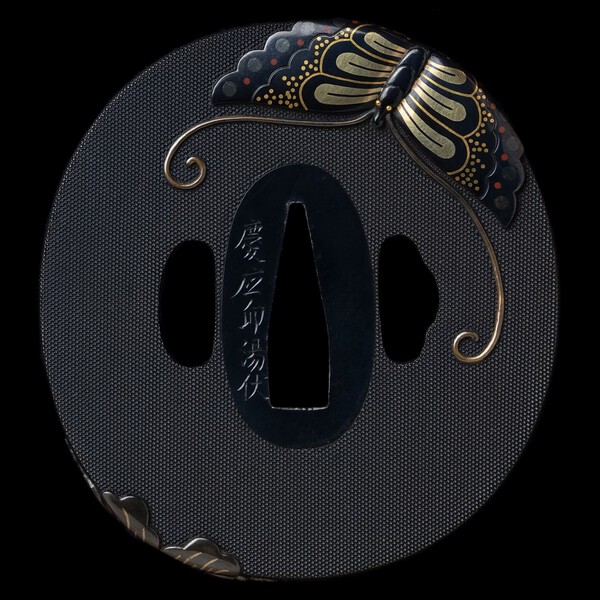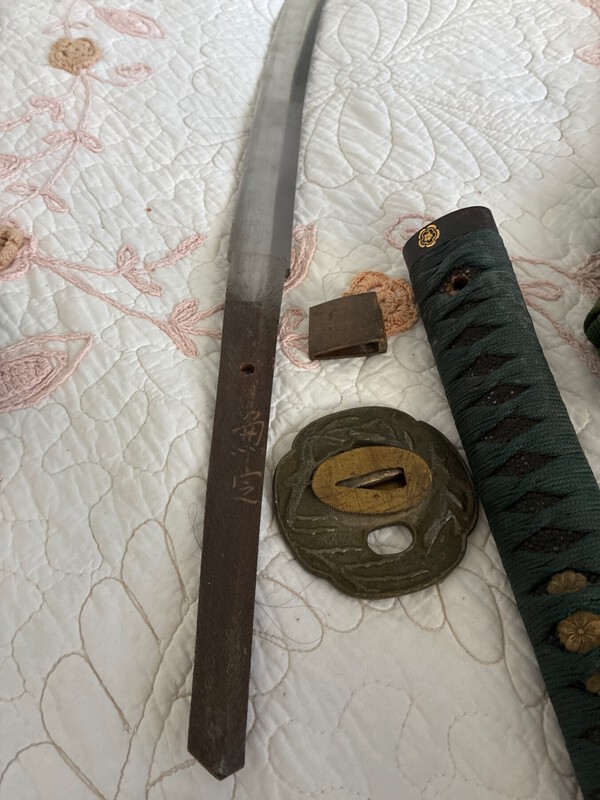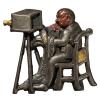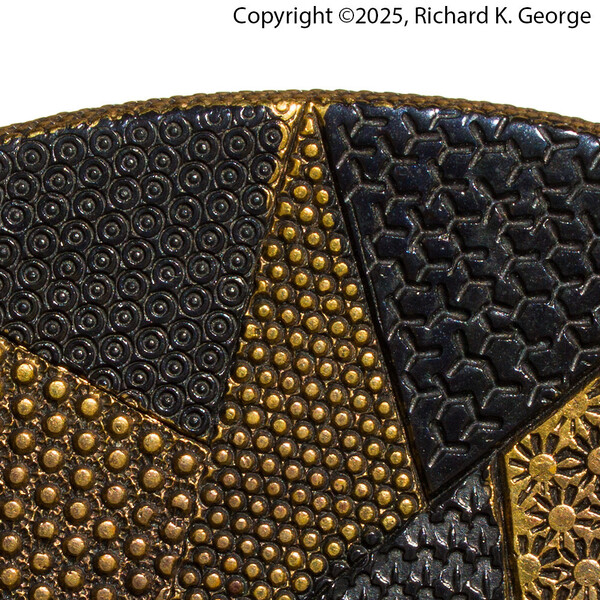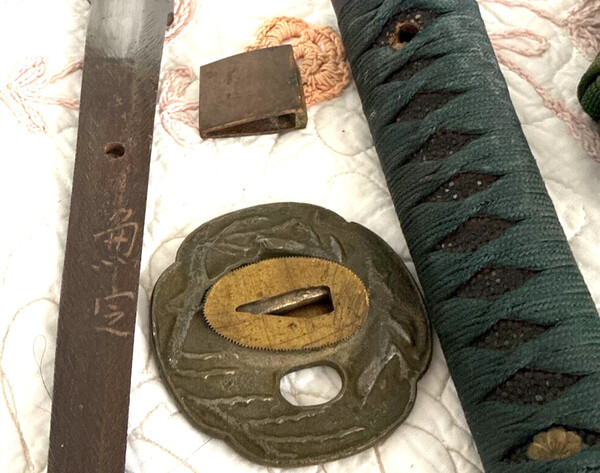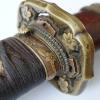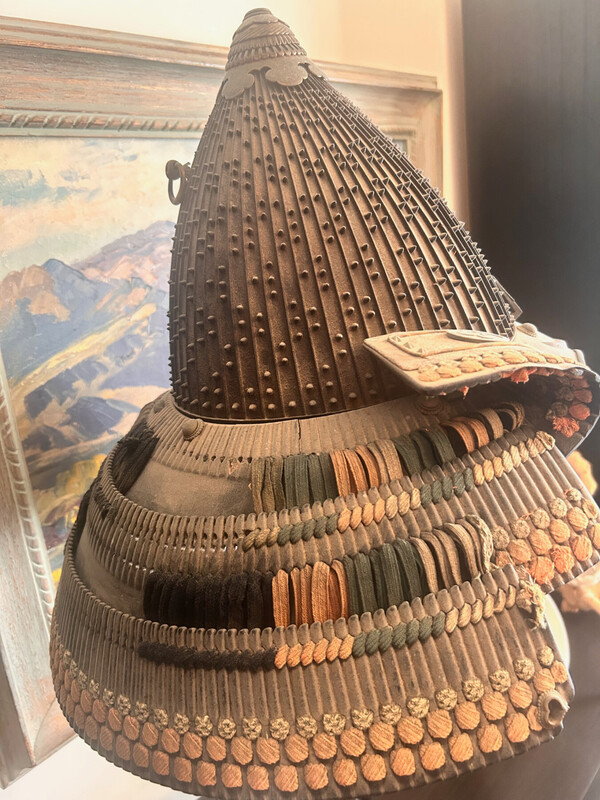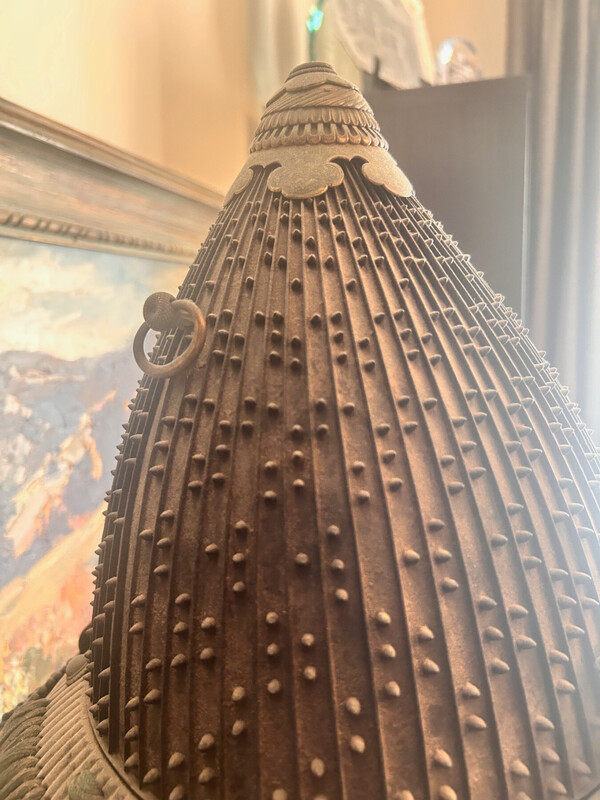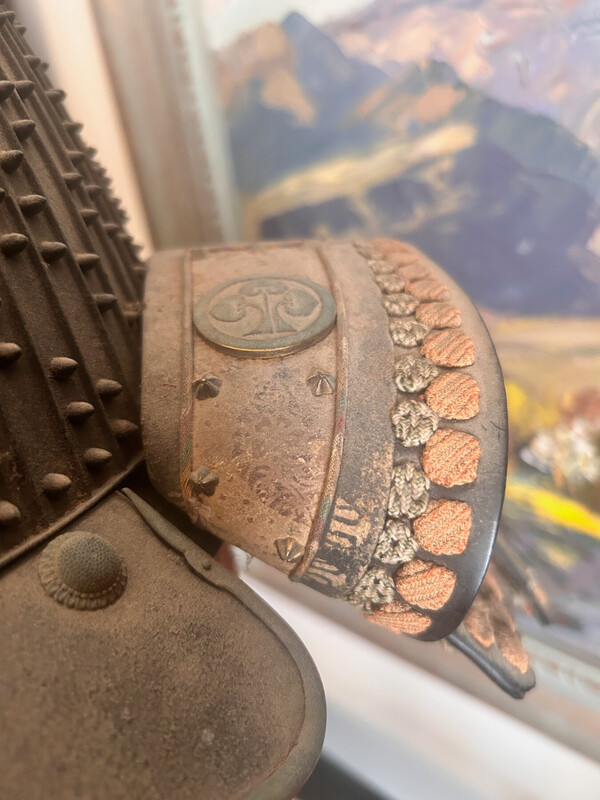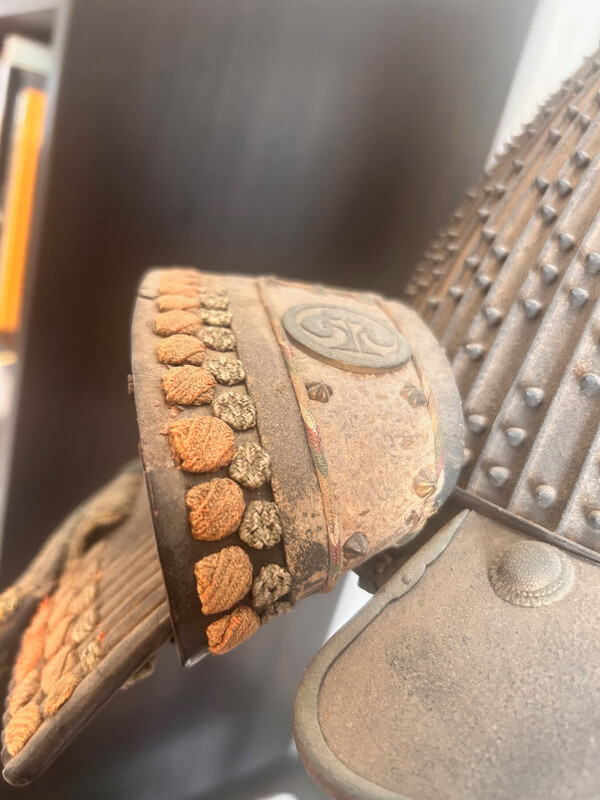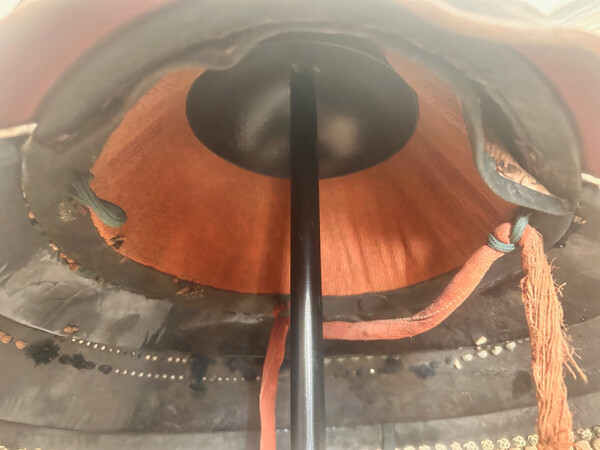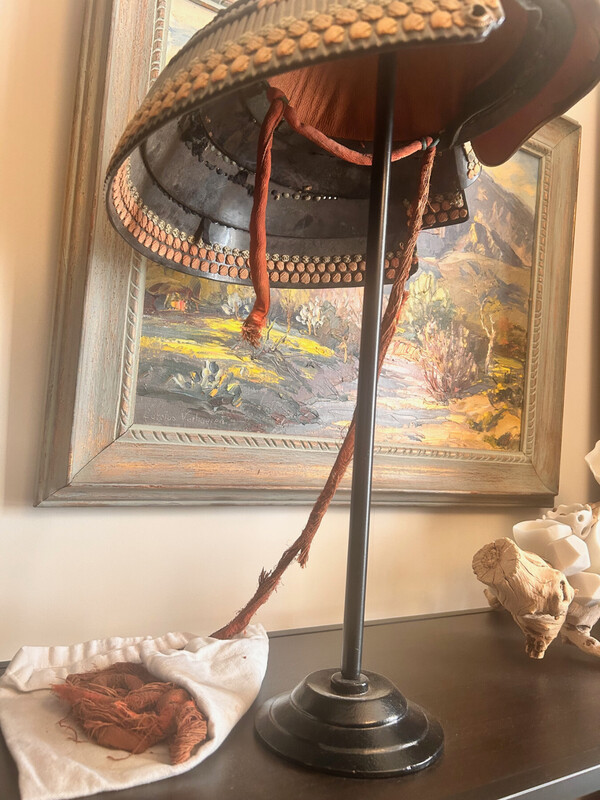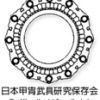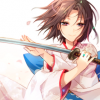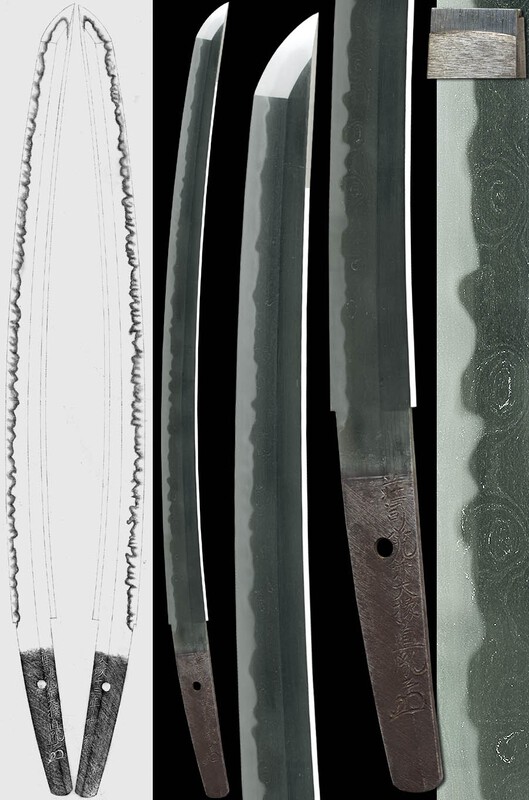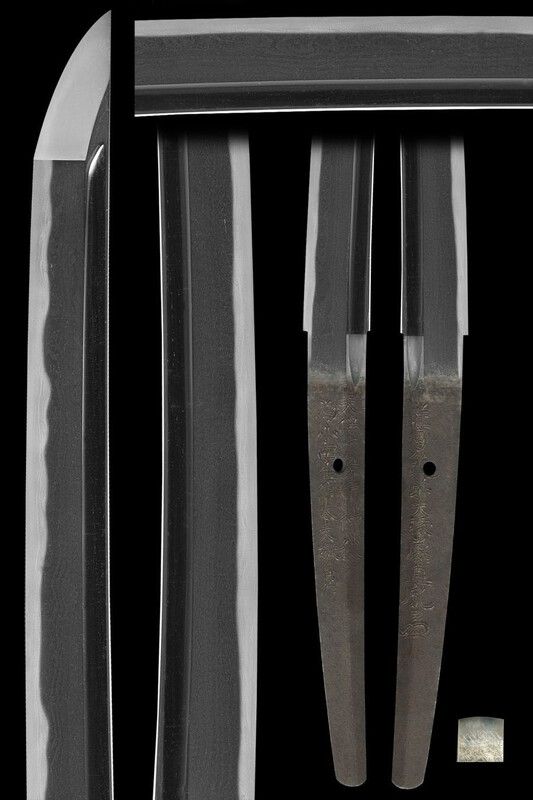Leaderboard
Popular Content
Showing content with the highest reputation on 07/09/2025 in all areas
-
4 points
-
Rick, what Baby Joe forgot to add to his translation is what it actually says in English... It means...'In the province of Bizen, in the village of Osafune, (the swordsmith) Sukesada made (this)'. Hope this helps...4 points
-
3 points
-
Hi Willi, Don't be in a hurry to buy; good swords will always be available and the more you know before you buy the happier you will be when you do. If you insist on purchasing a sword as a beginner you need an unusually honest dealer. Grey3 points
-
Hello everyone, I recently acquired a Japanese-style katana and I’m hoping for some expert input. I’m trying to determine whether this is a modern reproduction or if it may have some antique value. Details: Full tang construction Sharp, curved blade Traditional green tsuka-ito wrapping with floral menuki Brass tsuba with carved design Saya is black lacquered wood with green sageo Two kanji characters engraved on the tang: 南 守 (“Minami Mamoru” or “Protect from the South”?) Questions: Is this sword likely to be a modern battle-ready replica? Does the mei (signature) on the tang match any known smith or workshop? Any indication of age based on fittings, nakago, or blade shape? Estimated value range? Thank you so much for your time — any feedback is deeply appreciated! Best regards, Olga2 points
-
The colour of the base material, [seppa-dai] and the "silver" looks wrong. There is also some paint overspray on the edges of the seppa-dai. Also when you look at other items from the same seller he has a majority of fakes - some "good" fakes like the two tsuba with horses - until you see the edges. https://www.jauce.com/auction/r1191847950 https://www.jauce.com/auction/r1191847950 both these horse guards have "shakudo" nanako but not when you see the rim edges in one and the hitsu walls in the other - shouldn't the colour be the same in all the exposed areas? Fine details let down by bad painting. [IMHO]2 points
-
1. Buy books. There are plenty of threads about which books to buy (use NMB search). Markus Sesko has translated a great deal of info, take advantage. 2. Study Japanese-nihonto history. A must for any serious collector. 3. Write out and ID your collecting objectives. What makes a sword collectible? What is kantei? According to Sato sensei what is the 2nd step in kantei? 4. Join study groups. Attend sword shows. Meet dealers. 5. "Don't mistake temptation for opportunity" Good luck.2 points
-
Spelling mistake? No, I am bewildered why this happens. I note that many Seiryuken Eiju tsuba have half the signature removed particularly on the tanto/hamidashi size pieces. Is this some sort of school quality control? Seiryuken Eiju Perhaps some signatures were obvious Gimei and were removed in order for the "true" workmanship to prevail? I have for instance a Soten school piece that was signed "Umetada Myoju" as an attempt to gain more money [poor attempt to deceive] It does make these "erased" pieces very interesting talking points.2 points
-
2 points
-
2 points
-
2 points
-
Check out just how far fakes have come with their nanako-ji https://www.jauce.com/auction/f1191847540 https://www.jauce.com/auction/m1191843571 Luckily their paint work is still not up to scratch! Newbies beware!!2 points
-
I posted this several years ago, from an article by an Admiral Edwin Layton and Alan Harvie. According to my old notes, it was originally sourced from "Soken Kodogu Yogo lo Meisho no Kaiselsu". Certain types of nanako are associated with certain schools, and I was trying to learn the differences between the nanako of the various Ko-Goto masters up to Goto Tokujo. I think it is one of my projects that fell by the wayside some time ago.1 point
-
The tsuka is wrapped the wrong way. The crossings of the Ito must alternate right over left, left over right...and so on, which is not the case here. The mei looks to me as if it had been scratched(?) over an artificially blackened tang. Agree with cast tsuba of non-Japanese origin and very bad filemarks on nakago. All in all a spurious assembly of parts. Sorry Olga reinhard1 point
-
Thank you all very much for your help! Moriyama-san that is really impressive. Thanks!1 point
-
It's wild isn't it? Glad I got mine when I did... It seems I just barely beat the price hike. For the last year or so, i've noticed that they've been commanding ~$1000 bottom dollar. Good ones seem to be listed for $2000, pretty regularly. Just a few years ago, you could find them for $500-$750, and that now seems impossible.1 point
-
Anyone look at current asking prices for Type 95s? Just scanned ebay and they are going through the roof! $1,200 is the low end with several above $1,500 up to $2,200 USD!!!! Sure, that is asking price and the actual sale may go lower, but my point is the asking prices are way up.1 point
-
Took a look at it. It's 100% a lightweight gunto. All of the fittings as described in dawsons are smaller than normal. It is very light in the hand. Feels more like a police saber in all ways. There is no edge to the blade, not even a false hamon. The fittings are of high quality and the blade is obviously plated. No habaki and seems like it was never intended to have one. The saya wouldn't fit if it did. I've actually never come across one before but then again the UK market is more limited.1 point
-
I think it is difficult to tell if the design was first there and cut through later, or was carved up to the existing hole. In your example we can't see how far the carving has gone down the hitsu wall because it is filled.1 point
-
I couldn't guess. It could be a kantei point for Seiryuken Eiju tanto - they all seem to have it? One here in a museum from Osaka https://www.ikm-art.jp/degitalmuseum/num/002/0020164000.html [Sorry to hijack the thread with Eiju examples, but they were a group that I am familiar with] [I have never been a big fan of papers myself, I like the tsuba not the ephemera that is someone elses opinion at one time]1 point
-
Also if you have an idea about what you're looking to buy - you can always post in the 'wanted to buy' section. It's often easier doing deals 1 on 1 with people. Obviously you need to validate if the price is acceptable, but you need to do that with shops just the same. And shops usually have a high markup. In any case you've come to the right place. This is the biggest online nihonto forum and a lot of people here are very helpful. You'll get the odd remark every now and then, but please try to see past that, at heart we're a friendly bunch. If you don't know that much about nihonto and you are a bit concerned about resell value, I would opt for NBTHK papers. That will give you some reassurance about authenticity. The bigger the nametag without papers, the larger the chance it's not what it's portraying to be.1 point
-
I am not well versed in all the relevant terminology or history, but I can try to describe certain elements based on the knowledge I have tried to gain online and will make an attempt to use some terms, hopefully correctly. And hope I have provided some images that are useful. I am grateful for any additions and corrections and would be interested in insights from your knowledge, history, experience or enthusiasm so I can better appreciate it and create a good description for my friend. I don't know if he has interest in restoring it, selling/donating it. 1. This suji bowl shape (hachi) is shiinari ("acorn") or toppai ("pointed") 2. 62 plates form the bowl that are 3. Standing rivets. They are in groups of 1, 2 and 3. 4. The opening on the top (tehen) is fitted with a tehen kanamono that seems to have 7 layers or pieces culminating in a solid (closed) top piece. 5. The plate at the center, back of the hachi has a ring (Kasa jirushi no kan ?) 6. The fukigaeshi seem to have some interesting patterned material under the layers of dust/dirt, with star or rosette shaped rivets or studs and a kamon on each side with Tachi Aoi (standing hollyhock)(?). Does this symbol represent a specific lineage or family crest? 7. The multi-lame skirt (shikoro) has three metal lames attached by multi-colored lacing (maybe a third of it missing)and with interesting "heart-shaped" metal pieces in outer corners of lower lame [wow, restoring lacing does look like it would be a challenging endeavor] 8. The helmet liner (Ukebari) is intact and chin cord (shinobi-no-o) is attached but degraded. 9. The visor (Mabizashi) is dented which has caused some cracking of the red laquer (paint) on the visor underside. Is there any reason to look for a signature or other markings and, if so, where or how? I think beyond a description like something above, he would be interested to know a general age or time period for the helmet and anything that might get him interested in doing something with it. Hate to see this just put back into a box for years and then likely to be found by someone who might then have very little interest in it. A lot of fine craftsmanship and beauty in this and even more so in the really fine examples I have seem during my internet explorations. Thanks for any input -- much appreciated, azzie b.1 point
-
That blade is going to be gimei (false inscription). There are a number of smiths that signed Hizen Tadayoshi and they are very collectable swords. This is claiming to be the 1st gen which is a huge red flag without papers and real 1st gen Tadayoshi blades will go for 5-10x what this is listed for. You should avoid any blades as a beginner that don't come with modern NBTHK papers authenticating the signatures. You could get a much nicer blade for $5500 with a legitimate signature. I would continue to advise you to avoid this seller and probably eBay and auction sites in general as 99% of the blades on there are going to be un-papered and gimei if signed. That's not to say they're not real antique swords, but oftentimes they are lower quality swords with a fake inscription put on them trying to get more money out of the sword than it would ever be worth. Not to mention the sword listed is not in a great polish and is quite scratched. The tang (nakago) also looks to have been cleaned at some point if the lighting isn't deceiving me which is another big red flag and detractor from any old sword.1 point
-
Nice wall and the signature looks decent enough. I would try to look at books and find a (near) perfect match. However I would also seriously consider shinto Sukesada as an option.1 point
-
1 point
-
You see quite a few Koto Katana/tachi chopped off to make shorter wakizashi. Not talking about suriage blades, as in Edo sword length regulations. Swords salvaged from broken swords. Chances are they were broken in a battle/fight?, but you will never know for sure.1 point
-
Sounds like our wives might get along Personally, I believe any weapon, especially one with an unknown history; deserves respect as a potential "death dealer." It can be tough to convince someone, especially a partner, that a blade has “never seen blood.” I usually explain to my wife that it’s impossible to know the full backstory of any weapon. It might have taken a life, but now that it's in my hands, I treat it with the utmost respect and care. In my experience, especially with the “hippy-dippy” types, intention matters a lot. Framing it as a tool you're honoring and caring for can make all the difference. (For context: I live in Oregon; beautiful, green, and the land of tree huggers. ) Anyway, here’s a thread I started a while back in the Izakaya. Might be worth a read, or even something to show your wives.1 point
-
As mentioned above, if your blade is Edo period or later, (unless it's in Shin-Gunto mounts) the chances it was ever used to kill are quite low. And even if it's Koto, remember that the primary killers on a Japanese battlefield back then would have been Bow and arrows, Yari and Naginata, or towards the later period, Tanegashima (matchlock muskets). Swords were usually secondary weapons. A blade in Shin-Gunto mounts makes the kill probability higher, as WW2-era Japanese officers were rather keen on "testing" their blades, usually on the necks of helpless prisoners. But if your blade is coming out of Japan, the previous owner may never have been deployed overseas. This will sound "Hippy-Dippy", but hey, I'm from California... If your wife is that concerned, you can burn some sage or incense next to the blade while playing some Japanese Temple Music or Mantras via YouTube and such. Just a little karmic cleansing to smooth things over if the blade's Kami is a little shook by the move from good ol' Nippon to the Lone Star State. I do it with all my blades.1 point
-
Thanks for all the info this is how I found it in the wall framing haven't cleaned or painted it. No telling what the person who put it in there did though1 point
-
1 point
-
1 point
-
1 point
-
1 point
-
Sure, Lex. The seller didn't take good pictures ,but here are a few where you can kinda make out the jigane.1 point
-
1 point
-
The wood of the stock shrinks and grips the barrel. Sometimes there is rust involved which makes for an even more solid grip. You are right; some of these slender stocks look and feel quite fragile. Gentle all-round use of a rubber mallet can be better (and less painful) than the palm of the hand. Tapping everywhere can break unwanted seals, and loosen things up.1 point
-
I’m the one who started this but after looking at the pictures it seems to be the result of the of the walls of the punch surrounding the actual dome. So I think they are punched round but the surrounding punches pressed on there sides. I encircled some of the more prominent ones I see. Here I made an enlarged picture of Nanako I made to see where the chisel can be improved. my flaw was striking to hard creating this honeycomb like walls while striking lighter was enough to create the domes without the walls. The picture was take with 60x or 120x magnification I’m not sure anymore. I’m just trying to learn and it could be because of the lighting of the pictures that yours appear so squarish but then there are this punch marks at the sepapdai.1 point
-
I wouldn't say a position of knowledge Brian, but maybe a little further insight, but thanks for allowing me to post because this was an interesting topic, too bad it branched off into the absurd… let’s see if we can bring it back on course a little. I’ve been lucky enough to polish a couple Naotane in my time, and I feel I have some understanding of his work. I’ve been even luckier to have had many discussions with people who know far more than I do about forging techniques, and I believe one particular technique I’ve learnt about has some relation to this discussion. Naotane was a master of the shinshinto period who was able to produce incredible work in many different styles. There were of course several smiths of this period who skilfully produced swords in different styles of the gokaden… but Naotane was able to produce several different sub-styles within each of the gokaden in which he worked, but rather than just changing the type of hamon, he used completely different forging techniques, which is where his genius lies for me. For example, just in his Bizen-den alone I’ve seen several different approaches used: - He made Kagemitsu and Oei-Bizen utsushi using typical forging techniques and tsuchioke to create a more controlled yakiba and utsuri on a ko-itame hada. - He occasionally used a mixed hada in his Kagemitsu utsushi, with a flowing chikei mixed in with ko-itame hada. - Sometimes he made a pronounced uzumaki-hada in his Bizen-den, which I’ve heard as being a kantei point of his, though I’ve not often seen it. - And rarely, he made Bizen utsushi using hadaka-yaki to produce more wild yakiba and stronger utsuri formations. Naotane’s Uzumaki-hada in Bizen-den. I’ve also seen him create Yamato-den with thick bands of masame-hada, and Soshu-den with swirls and burls of chikei similar to Matsukawa-hada… the point is, he was probably the most versatile smith of the shinshinto period, especially when it came to creating different jigane. During a time when many smiths produced very tight hada, sometimes even muji-like hada, Naotane was forging masterful steel with flowing chikei and utsuri. One of the techniques he mastered in order to achieve this variety of steel was called tsukurigane, it’s a term I came across early in my polishing apprenticeship, and I’ve not seen it mentioned in any texts that I can recall. It was explained to me as a way of forging steel that reliably produces a clear and controlled ‘chikei-like effect’ which several modern-day makers were using in their Soshu-den utsushi. But, it’s not the way chikei was typically created in koto work, except for a few schools such as the Norishige school, who I believe used some form of tsukurigane, but that’s a completely different rabbit-hole and a completely different level of genius! Tsukurigane (‘tsukuri’ generally translates as ‘making’ or ‘to make’ or relates to a particular technique of manufacture such as ‘shinogi-zukuri’, but in this case I believe ‘tsukuri’ infers a meaning of the steel being controlled or contrived). It’s a type of kawagane which is made by forging together two or more different billets of steel, often forging them together using a relatively low number of folds. The different billets used in the process can each be folded in the same pattern (e.g. ko-tame) and can be of the same number of folds, so when they’re combined, there’s no discernible difference between them in terms of the pattern or the fineness/tightness of the grain. But, these different billets usually have vastly varying carbon content, which means once polished they’ll produce different colours and textures, and different amounts of ji-nie, which is what creates the chikei effect running through the jigane. The less you fold these billets together to combine them, the larger the chikei pattern it’ll create, and the larger the difference in carbon content, the more contrast there’ll be in the chikei. Apparently, combining them using limited folds, but without producing kitae-ware is extremely difficult, but when done masterfully as Naotane was able to achieve, it can create a very beautiful chikei effect flowing through the jigane. Naotane’s tsukurigane producing a masame/mokume mixed effect. I once opened a window on a Naotane that was in Bizen-den and was a great example of tsukurigane. Something I found fascinating was, once I’d brought out the jigane, on some angles it would appear as a very tight ko-itame with only a hint of chikei in the background, while on other angles swirling chikei would jump to the surface and completely change the overall impression of the steel. It was a brilliant effect that gave the steel a lot of depth, and it made me think about how different a sword can look on different angles or under different lights. Of course, the polish makes a huge difference as well, the previous polish was acid-etched and gave the steel a damascus-like effect. These two pics are of the Naotane I just described, as you can see one shows a tight ko-itame, and the other shows a flowing chikei effect running through it. But the pics are of the exact same section of steel, at the same point of the polishing process, under the same light, in the same room… just on different angles. I believe all of the above relates to the juyo katana which started this discussion… I definitely see tsukurigane in this sword, which is creating a lot of chikei, but I’m not sure I specifically see mokume-hada or uzumaki-hada. There are definitely some patterns which hint at something reminiscent of mokume, but I don’t think they’re actually forming a proper burl pattern, it seems that they’re a sort of wavy/churning chikei effect, so personally I don’t think I’d call it mokume. Either way, the chikei created by this style of forging can exist within a tight ko-itame, so even if there were mokume or uzumaki patterns in the chikei, I could understand the NBTHK defining it as ko-itame. It’s not easy sometimes to define a hada, for me, the strength and clarity of which a pattern appears, and how often it occurs over the whole sword are big factors in defining it, and I imagine those are also factors in determining whether or not it’s mentioned in an NBTHK setsumei. But I’m no expert, and I haven’t seen this sword in hand, which is really important as pictures can be misleading, as I mentioned above, a slight change in light or angle can completely change the appearance of certain types of jigane. The NBTHK on the other hand are experts, and have seen the sword in hand, in fact they’ve studied it at length as they’ve passed it as juyo. So, I think the point that Jacques is trying to make is valid, they’ve not mentioned mokume or uzumaki in their setsumei, so one can fairly surmise that there isn’t any in the forging. I will say though, there are perhaps better ways of trying to get your point across, and the discussion would’ve been better off if its contributors were maybe more considerate. Perhaps there are language barriers, or things are being misconstrued as they often can be over emails and forum posts, either way an interesting discussion that merits more thought. That’s just my 2 cents.1 point
-
It's perfectly safe to use a modern paint stripper on Japanese metalwork. I use Nitromors, it's vile stuff to handle but removes all trace of old wax, varnish and other organic coatings. It won't damage the patina or gold at all, unless either are just paint :D and if it is paint it doesn't belong there anyway. Once that step has been carried out any remaining grime and dirt can be gently scrubbed off with and old toothbrush, warm water and a mild liquid soap. I use Fairy Liquid. Attempting to re-punch nanako is unlikely to yeild satisfactory results, I'd go so far as to suggest it's practically impossible to do without merely creating a glaringly obvious patch of differently patterned ground. In this case I don't think the wear is really an issue, it's simply part of it's history and the patina seems to have healed where previously worn anyway. Bringing back the patina on worn shakudo is relatively straightforward and should present no difficultly to someone versed in traditional processes. If the colour is all still intact the piece can be rewaxed using Renaisance wax to protect and enhance the patina.1 point
-
0 points
-
-1 points
-
It's redundant: all famous swords have been the subject of numerous publications. We learn nothing new.-1 points
-
What's new and undocumented elsewhere? Another treasure (not available in english): It lists all the historical figures and facts, laws, major companies, etc. in Japanese history https://www.aventure...naire-histoire-japon Available free of charge here https://www.persee.fr/collection/dhjap-1 points
This leaderboard is set to Johannesburg/GMT+02:00

